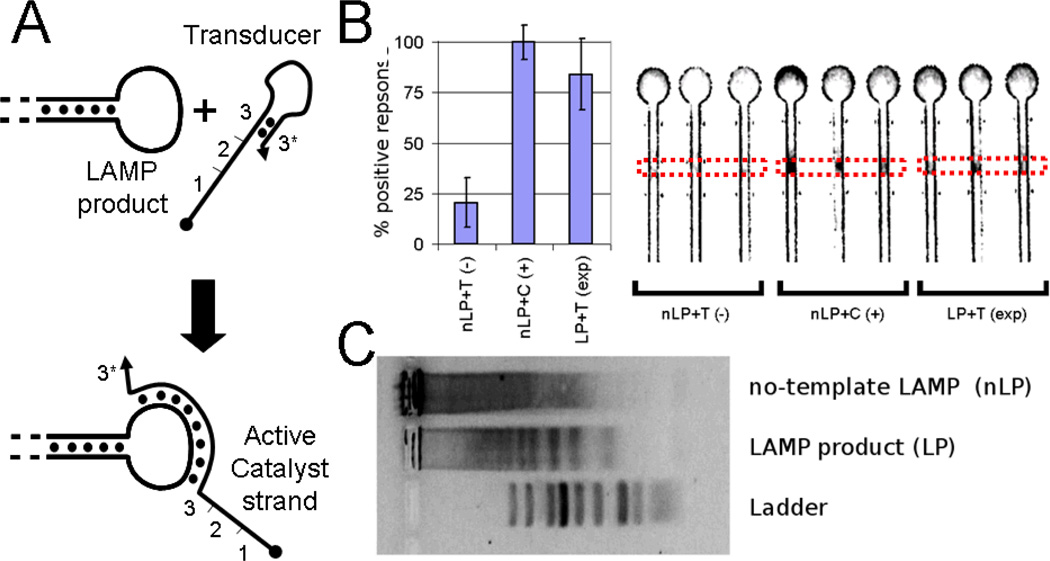Figure 6.
(A) Schematic showing strategy by which a transducer (T) binds to the ssDNA loop of the LAMP product (LP) to activate a DNA catalyst for CHA. (B) Fluorescence was measured in region indicated by dotted lines. The results show that the transduced output (LP+T) generates a clear output in the paperfluidic format comparable to the positive control, a LAMP reaction without template, and spiked with 5 nM active catalyst in place of the transducer (nLP+C) and well above the null template control (nLP+T). (C) A agarose gel shows that the LP gives a periodic series of concatamers while the null-template control (nLP) shows no specific product.

